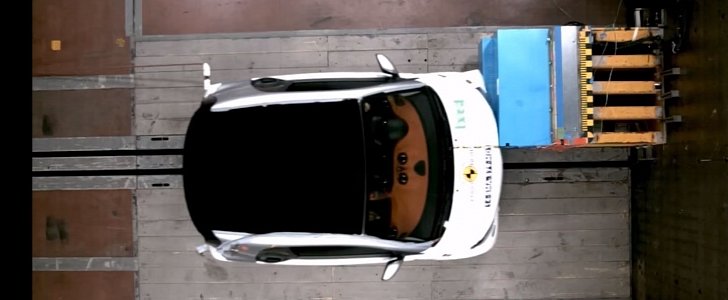The first thing that goes through everybody's mind when they see a smart fortwo is "alright, it's cute and all, but is that thing safe?" The concern is perfectly justified: in a world where the streets are full of 5,000 pounds or more SUVs, the smart looks like a mouse lost in the middle of an elephant herd.
And yet even from the model's first generation, Daimler insisted the smart was a very safe vehicle. The company anticipated a lot of people would be reluctant to driving or traveling inside something resembling an egg on wheels, so it set to communicate right from the off the safety features of the supermini.
It all comes down to the Tridion safety cell - the structure around the driver and passenger that acts as a protective cage in case of an accident, preventing any deformations and keeping those inside in one piece. The smart is also massively helped by the fact it has its engine in the back, but with the electric drive version that loses relevance.
Smart was clever enough to emphasize the Tridion and turn it into a styling element as well as a safety one. All smarts can have their "safety cell" painted in a different color, highlighting the structure and reminding the owner each time they see the car that they're protected in case of a crash.
There is one downside to the size and shape of the smart, and that's the absence of crumple zones. There is one sitting in front of the Tridion, but its efficiency is limited. That means that even though the structure won't collapse or change shape, those inside will still feel quite a shock as there was no controlled deformation to absorb the energy of the impact.
That being said, the smart fortwo still managed to get the maximum number of stars in the Euro NCAP tests with a total score for adult occupants of 82 percent. The only real problem for the tiny urban vehicle appeared during the side pole test where the dummy's torso only received "weak" protection. Other than that it's "good" or "adequate" across the table.
The European safety organization carried out the test in 2014 on a smart fortwo equipped with a 1.0-liter gasoline engine, but more recent trials showed the rating stands for the battery-powered models as well. And to give us an even better representation, it has just released the video of the electric drive model getting mauled. Even if you don't like smarts, you have to admit it's quite impressive what they've achieved.
It all comes down to the Tridion safety cell - the structure around the driver and passenger that acts as a protective cage in case of an accident, preventing any deformations and keeping those inside in one piece. The smart is also massively helped by the fact it has its engine in the back, but with the electric drive version that loses relevance.
Smart was clever enough to emphasize the Tridion and turn it into a styling element as well as a safety one. All smarts can have their "safety cell" painted in a different color, highlighting the structure and reminding the owner each time they see the car that they're protected in case of a crash.
There is one downside to the size and shape of the smart, and that's the absence of crumple zones. There is one sitting in front of the Tridion, but its efficiency is limited. That means that even though the structure won't collapse or change shape, those inside will still feel quite a shock as there was no controlled deformation to absorb the energy of the impact.
That being said, the smart fortwo still managed to get the maximum number of stars in the Euro NCAP tests with a total score for adult occupants of 82 percent. The only real problem for the tiny urban vehicle appeared during the side pole test where the dummy's torso only received "weak" protection. Other than that it's "good" or "adequate" across the table.
The European safety organization carried out the test in 2014 on a smart fortwo equipped with a 1.0-liter gasoline engine, but more recent trials showed the rating stands for the battery-powered models as well. And to give us an even better representation, it has just released the video of the electric drive model getting mauled. Even if you don't like smarts, you have to admit it's quite impressive what they've achieved.


